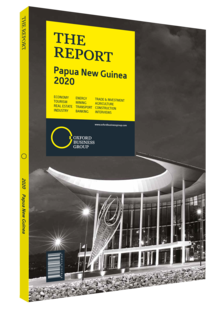Transport & Logistics

Papua New Guinea’s topography is characterised by mountainous terrain, rivers and around 600 islands. Travelling by road can be complicated and expensive, with many routes in need of maintenance; as a result, the transport of people and goods often relies on sea and air networks, which incur high costs for businesses operating in PNG. The ripple effects of improved transport infrastructure are vast – not only because the easier movement of goods and people can benefit the high-potential agriculture and tourism sectors, but also since improved connectivity will facilitate greater development opportunities for rural communities. While the full impact of Covid-19 on the sector remains to be seen, developing transport infrastructure is integral to the country’s medium- and long-term goals, and a vital stepping stone to economic diversification. Better connections and improved integration between different modes of transport will lower the cost of doing business and make the country a more attractive destination for investment. This chapter contains interviews with Robert Howden, Managing Director, Express Freight Management; and Rupert Bray, COO, Steamships Trading Company.

